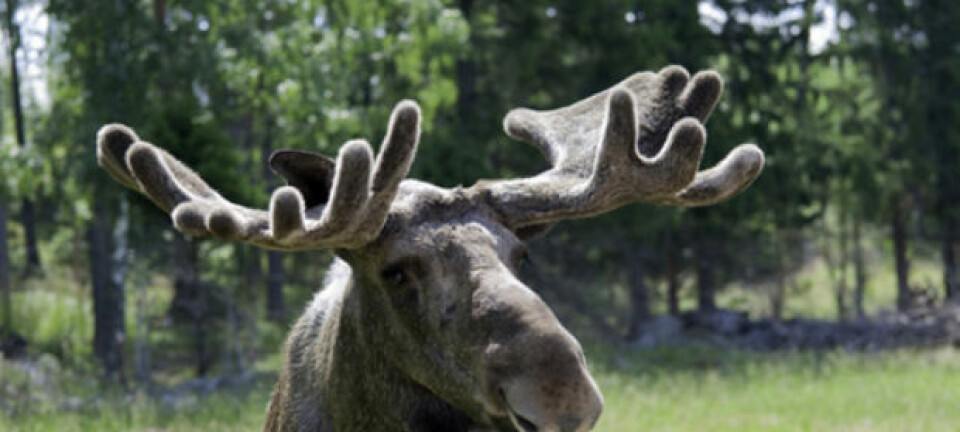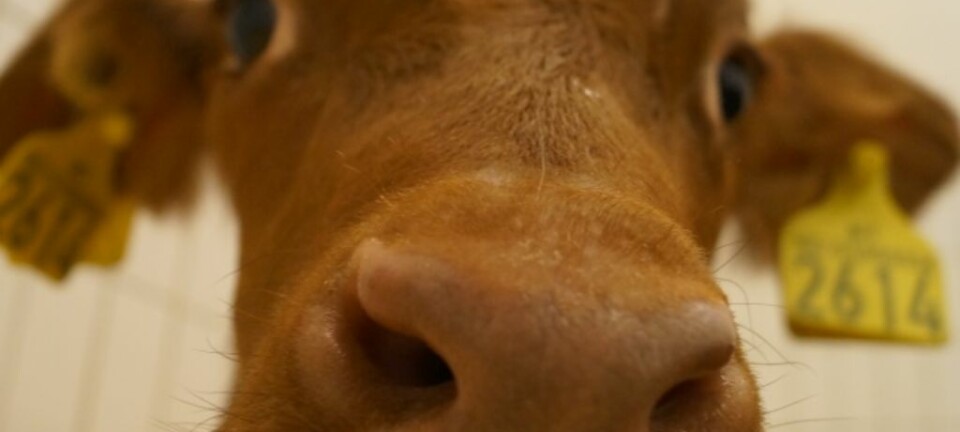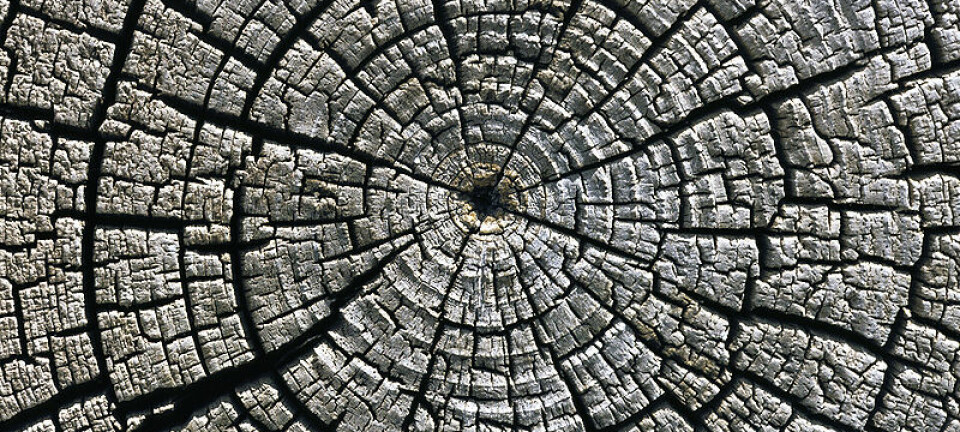An article from Norwegian University of Life Sciences (NMBU)
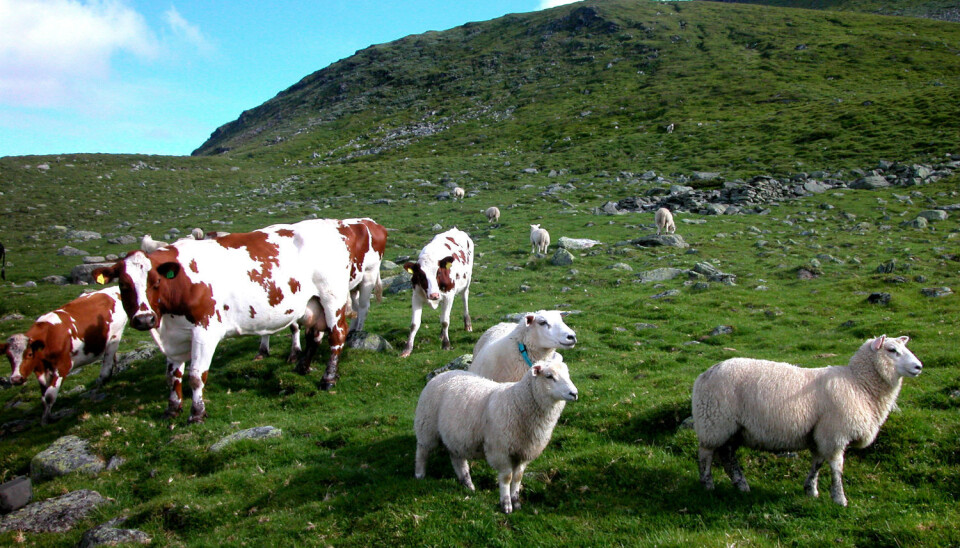
Cross-infection of foot rot between sheep and cattle
Foot rot is a serious and contagious hoof disease in sheep. New research has now revealed that cattle can also be carriers, even though they themselves are not seriously affected by the disease.
Denne artikkelen er over ti år gammel og kan inneholde utdatert informasjon.
Foot rot in sheep causes pain and leads to lameness, impaired animal welfare and huge economic losses in sheep farming.
The disease is caused by the virulent bacterium Dichelobacter nodosus, which results in a skin infection and inflammation in the area between the two claws of the hoof.
If the infection becomes severe, the whole hoof capsule may loosen from the underlying tissue.
Sheep can also carry less virulent types of the same bacterium. These also occur quite frequently in cattle, but usually cause milder and superficial skin infections or even no symptoms at all in cows.
Contrary to what previously believed
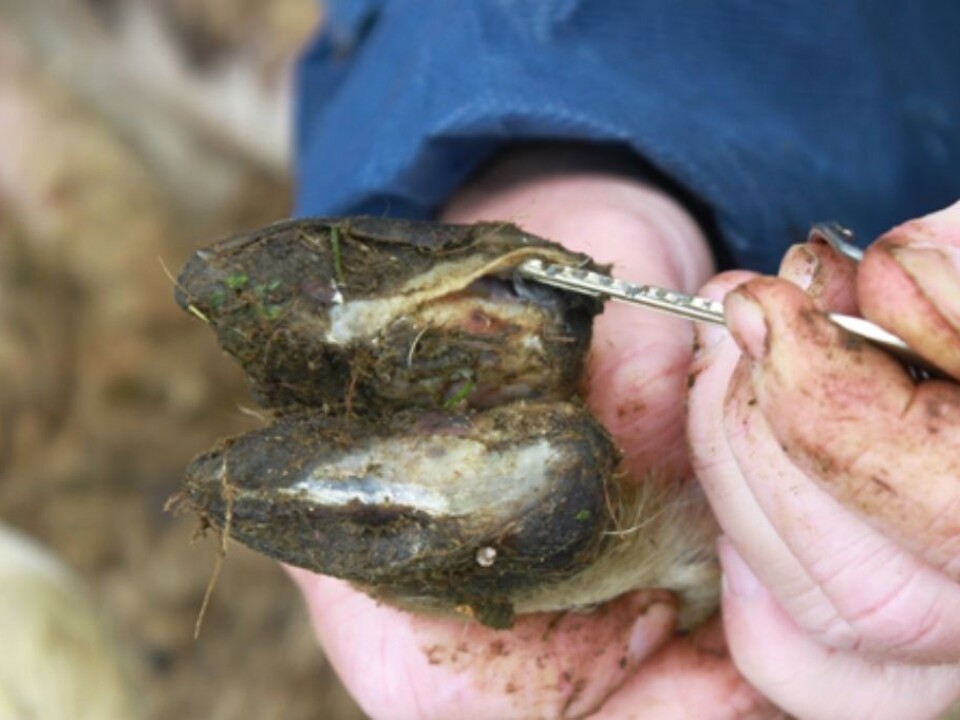
Scientists previously believed that no cross-infection of the virulent D. nodosus occurred between sheep and cows grazing on the same pastures. Cows were therefore never regarded as a possible carrier of this type of bacterium.
Maren Knappe-Poindecker, a PhD student at the Norwegian University of Life Sciences (NMBU), has studied the potential cross-infection of foot rot between sheep and cows on the same pastures.
Her research shows that cross-infection does in fact occur.
She examined animals from five farms where sheep suffering from foot rot pasture with cows. The hooves of the cows were examined to detect skin infections and the symptoms of ten sheep from each of the farms were registered in detail.
Bacteria closely related
On each farm, Knappe-Poindecker took bacteriological samples from ten sheep and ten cows for the purpose of identifying D. nodosus. The virulent strain of D. nodosus was detected in sixteen sheep from four of the farms and five cows from two of the same farms.
“The bacteria found in the cows were either genetically identical to the D. nodosus in the sheep on the same farm or were closely related to the same bacteria in the sheep,” explains Maren Knappe-Poindecker.
All the cows affected by virulent bacteria only had symptoms in the form of a mild skin infection and were treated with drugs that are usually an effective cure for such infections.
Three of the cows that were shown to be carriers of the bacterium had succeeded in ridding themselves of it after pasturing and their skin infection had healed.
One cow carried the bacterium for at least ten months before it was slaughtered, in spite of repeated attempts to treat the animal.
Cross-infection between sheep and cows
“The findings of this PhD study strongly indicate that cross-infection of D. nodosus does occur between sheep and cattle grazing on the same pasture,” says Knappe-Poindecker.
“The results also show that the virulent D. nodosus only causes a mild skin infection in cows and that infections caused by the virulent and mild strain of the bacterium respectively are indistinguishable.”
Grazing apparently helps to heal the inflammation in cows and to eliminate the virulent strains of D. nodosus. However, in some cows, the infection does not disappear and there is currently no effective treatment for it.
According to the researcher, this means that D. nodosus can survive for long periods of time in the hooves of cows which thereby present a risk when it comes to infecting healthy sheep.
In other words, cattle can be a reservoir for D. nodosus and must be regarded as a possible source of infection for sheep.
“It is important to take account of this when implementing programmes for combating foot rot in sheep,” concludes Knappe-Poindecker.
------------
Read the Norwegian version of this article at forskning.no








